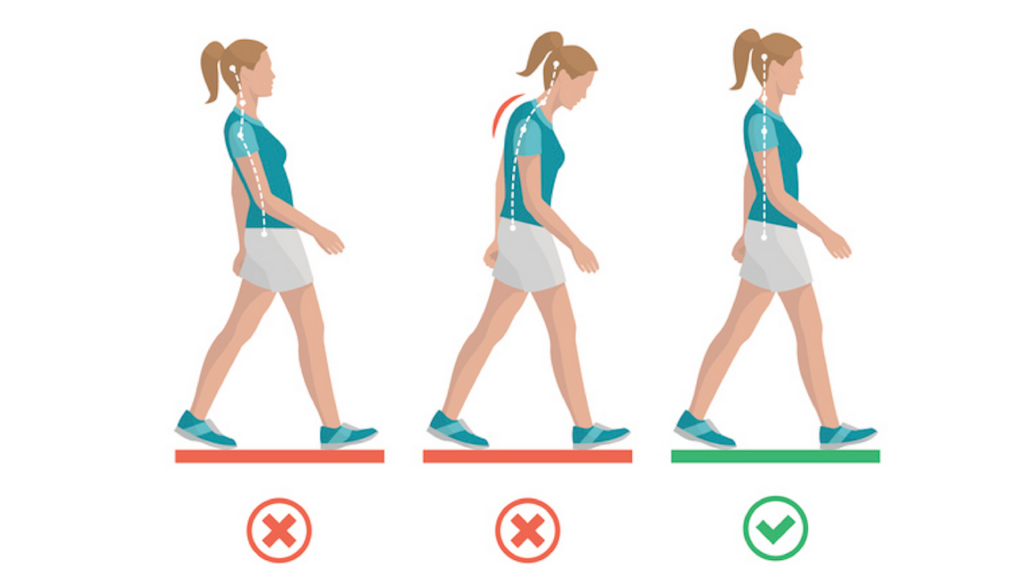I’ve been a practicing chiropractor for over 20 years, and I can tell you that most back problems are caused by poor body mechanics.
Body mechanics are how we hold our bodies and how we engage in basic and complex movements.
But most of us go through our entire lives without knowing how important proper body mechanics are to our wellbeing
More often than not we practice poor body mechanics, holding our bodies in positions that cause wear and tear on our spines.
We sit for long periods with our backs slouched, which creates chronic back pain.
We stare down at our smartphones for hours, causing neck pain and damage to our spines.
“Just one bad habit repeated over the course of months or years can lead to chronic back pain and unwanted, costly physical therapy.”
It’s no wonder why millions of Americans experience back problems, muscle fatigue, and turn to pain medicine.
But it doesn’t have to be this way.
With a few tweaks to your daily living and overall body alignment, you can significantly decrease your chronic pain and improve your health and well-being.
Here are some basic principles of good body mechanics and a variety of the best ways to approach daily activities, whether you’re at the office, at the gym or just relaxing at home.
Use these proper postures when you’re not active
Static postures are how you hold your body when you aren’t moving.
Take a moment and think about how often you don’t move during the day.
Hours at a desk, hours in the car, hours on the couch watching television…
Most of our days are spent standing still.
You’ve probably heard this a thousand times during your life, but I can’t stress enough that good posture is key to your spine’s health.
You should be aware of your posture throughout the day while sitting or in a standing position.
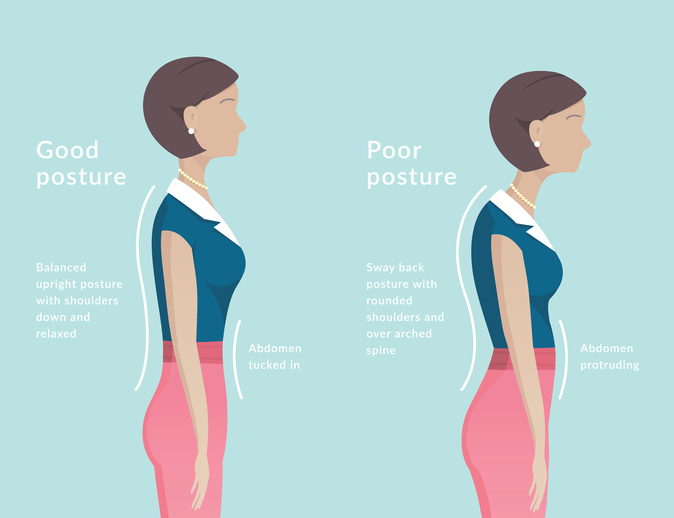
While you’re standing:
- Keep your neck and spine in a neutral position.
- Draw your navel gently in towards your spine.
- Relax your jaw muscles and keep your chin level to the ground.
- Draw your shoulders slightly behind you.
You can also try this technique: Imagine there’s a thread attached to the crown of your head, lifting it up ever so gently.
That trick often helps keep your back straight and your spine in the right position.
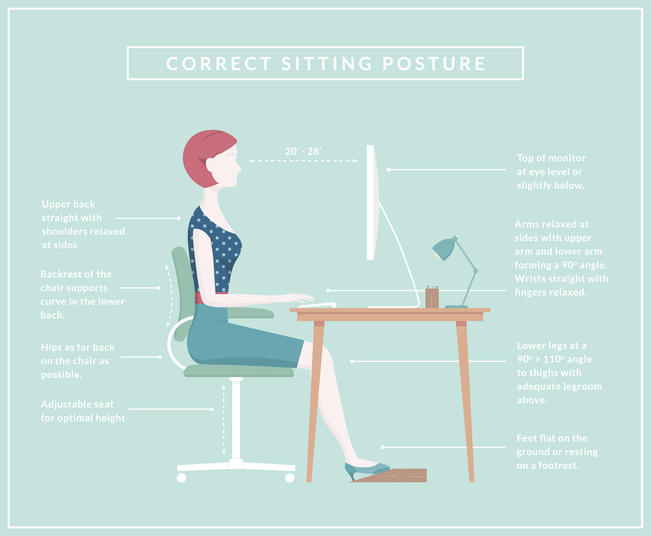
While you’re sitting:
- Sit with your knees bent at a 90-degree angle.
- Keep your hips and upper body at a 90-degree angle
- If you’re using a computer screen, keep it at eye level
- Keep your feet on the floor, and don’t cross them
- Keep your shoulders relaxed
- Use a small pillow in your lumbar region, or use a chair with lumbar support
You should avoid crossing your knees while you sit, and try to avoid twisting.
(RELATED: The best chair for relieving back pain)
Use these proper postures when you’re active
Dynamic postures are all about movement.
In other words, dynamic posture refers to your body’s alignment when you are in motion.
These can apply to lifting up a package at your doorstep or lifting weights at the gym.
So let’s look at some of the most common everyday movements…
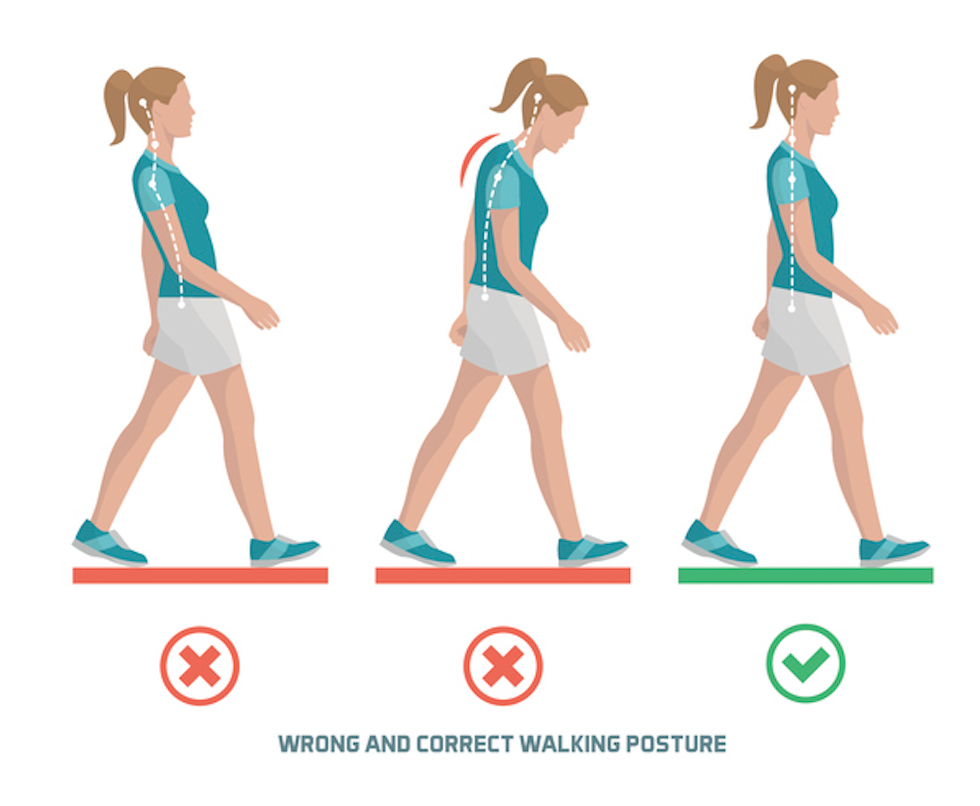
When you’re walking:
- Stand up tall and straight. Make sure you’re not arching your back or leaning forward or back, as this puts strain on your back muscles.
- Look straight ahead. Keep your chin up and your eyes focused about 20 feet ahead of you. Don’t look at the ground… or your phone!
- Keep your shoulders relaxed and slightly back. No slouching!
- Use your core muscles and keep your abdominal muscles pulled in slightly to help maintain good walking posture.
- Tuck in your butt. Squeeze in your behind a little and slightly rotate your hips forward. This will help keep you from arching your back. Your butt should not be sticking out when you walk.
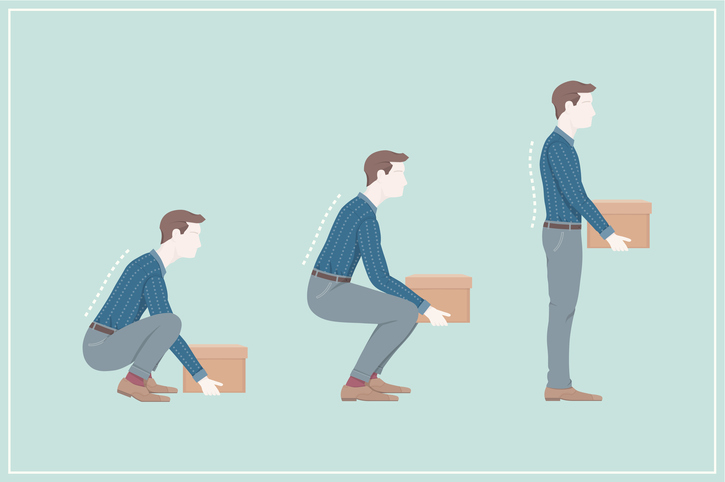
When you are lifting something:
- Stand close to the object with your feet far enough apart to give you a wide base of support.
- Bend at the knees and use your leg muscles and lower body to do the work — never use your back muscles, as this is a surefire recipe for low back pain.
- As you lift the object, make sure you have good posture: back straight, shoulders back and chest out.
- Carry heavy objects at waist level.
You should also be mindful of how you’re holding you’re body during other everyday actions, especially when you’re using your smartphone.
“Text neck,” as some doctors call it now, refers to the neck and back pain caused by the strain on the neck and spine caused by looking downward at smartphones.
The condition is more common than you may think, but you there are quick corrective moves you can do to relieve “text neck” pain and correct your phone posture.
I wrote about the dangers of text neck and how to relieve and correct the condition in my previous article, which you can read right here.
If you found this post helpful, you can find more great health information at Painarthirisrelief.com.
There you can also learn more about my Advanced Wellness Systems programs, which help my clients overcome a wide range of pain conditions.
Every program is tailored to your whole body picture, including your nutrition, sleep habits, pain conditions and more.
Many of my clients report lasting pain relief and even weight loss, increased energy and more self-confidence. To learn more, click right here
Related content:
Texting thumb pain: how to heal it fast
How to choose the best chair for back pain
17 back muscles that cause the most pain

